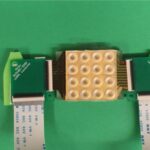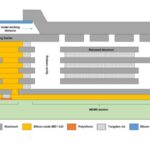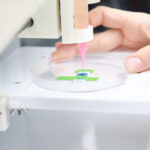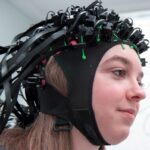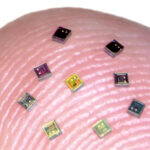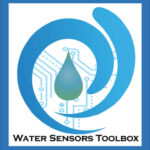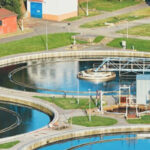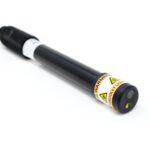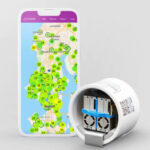Robots need numerous sensors and various sensing technologies to perform a variety of functions. However, for human-robot Interaction, the most important sensing could be performed in the skin — especially in those robots designed to be as lifelike as possible and physically interface with (touch) humans. To enhance the collaboration between humans and machines, the […]
Has integrated sensor and circuitry reached a new milestone?
Since the earliest days of microelectromechanical systems (MEMS) sensor products, the goal of easily combining the sensing structures made using MEMS processing with the required signal conditioning has driven many sensor R&D labs. If successful, the solution would make the resulting devices more useful in a broader range of applications. In the 1980s, the circuitry […]
How are sensors used in 3D bioprinting?
In general, three-dimensional (3D) printing or additive manufacturing is the construction of a three-dimensional object from a digital 3D model. With 3D bioprinting, the 3D constructs are living cells, biomaterials, bioactive components, and more. In the 21st Century, the generation and transplantation of several tissues, including multilayered skin, bone, vascular grafts, tracheal splints, heart tissue, […]
What does sensor-activated mean?
Some of the earliest uses for sensors that emerged over a hundred years ago involved direct actuation for control. Think of the mercury thermostat. A thermally responsive coil moves with changes in temperature and tilts a mercury chamber until it closes a set of contacts to turn on a heater in the home or office […]
What are quantum sensors?
Quantum sensors measure minute changes in electric and magnetic fields as well as motion and the measurements are made at the atomic level. At this scale, information from individual atoms instead of from huge collections of atoms allows quantum sensors to make exponentially more accurate, more thorough, more efficient, and more productive measurements. Using the […]
How do brain-computer interfaces use sensors?
Brain-Computer Interface (BCI) activated prosthetics, and other applications need sensors to provide feedback. Intensive work has been and continues to be done in this area. For example, researchers have reported their progress on an electroencephalogram (EEG)-based motor imagery BCI to control the movement of a prosthetic hand. The hand was instrumented with force and angle […]
How can sensors protect vulnerable areas? Pt 4
The U.S. Environmental Protection Agency (EPA) has ongoing efforts to address the unintended contamination and purposeful contamination of the nation’s water supplies. Sensing technologies are an integral part of the strategy. In 2023, the EPA proposed new limits to drinking water contamination from toxic “forever chemicals” or per fluoroalkyl and polyfluoroalkyl substances (PFAS). Used widely […]
How can sensors protect vulnerable areas? Pt 3
Today, advertisements for Camp Lejeune lawsuit settlements are frequently seen on cable and network TV. Another frequently cited water disaster occurred in Flint, Michigan. Detecting lead in drinking water On April 25, 2014, the City of Flint changed its water supply source from Lake Huron water (supplied by Detroit) to the Flint River. Subsequently, water […]
How can sensors protect vulnerable areas? Pt 2
Part 1 of this four-part blog addressed air quality monitoring in cities and populated areas. Less densely populated areas such as a rain forest may require different approaches. In addition, water quality monitoring in outdoor locations as well as clean drinking water from processing stations provide additional sensing opportunities. Part 2 will address these areas. […]
How can sensors protect vulnerable areas? Part 1
Clean air and water are essential for life. Protecting these valuable, essential elements, starts with sensors to detect threats from intentional or unintentional contamination. Today, available sensing technologies target different locations/areas to ensure the safe ongoing supply of fresh air and water. Using a variety of different sensing techniques, the key to broad and localized […]

